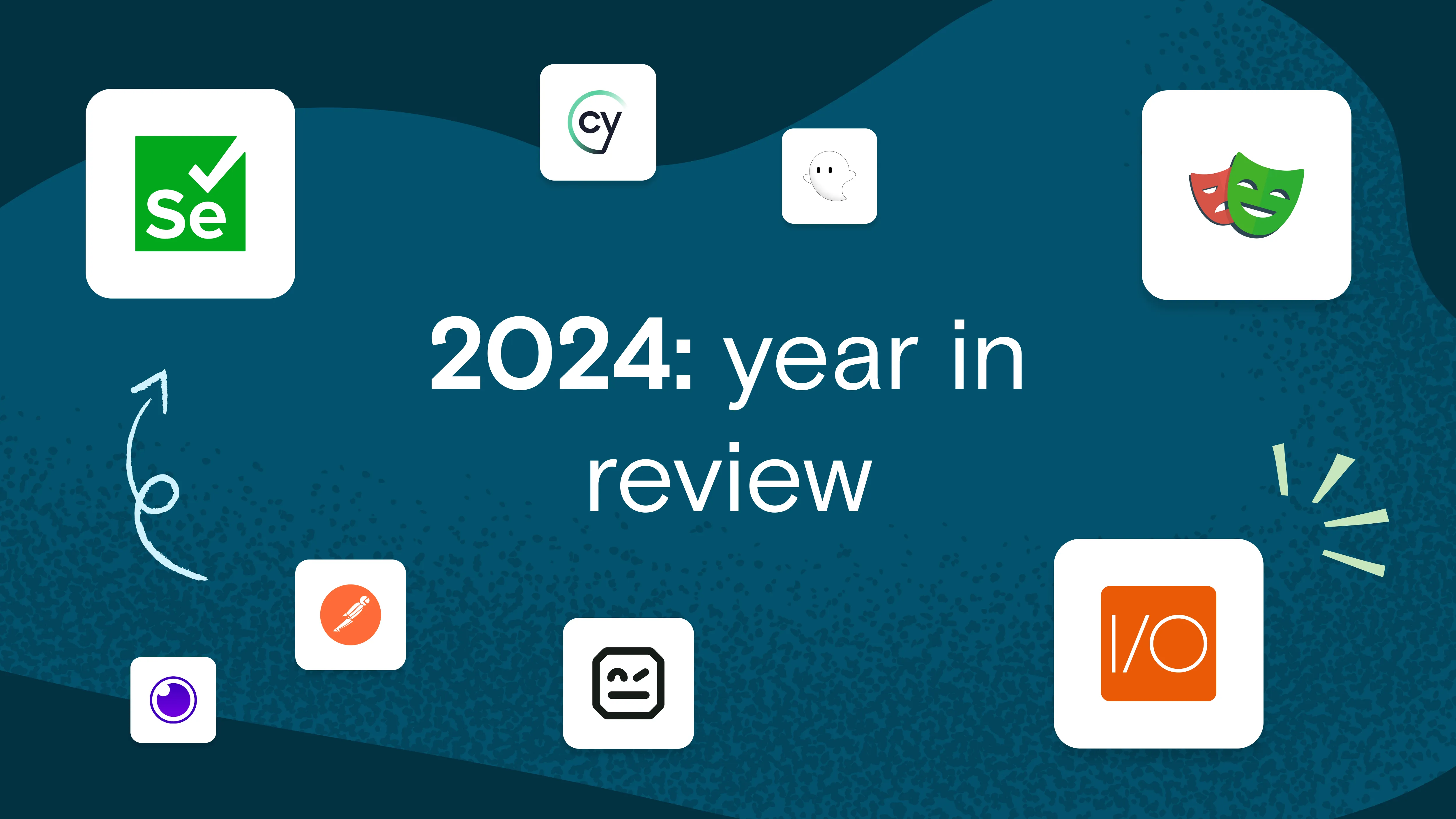That was 2024. A year of social, sporting, political, and technological change. And plenty of important milestones for QAs.
So, what happened over the last twelve months?
Growing market. Increasing competition. Changing habits
You still love Selenium
Selenium remains an extremely popular choice for QAs and developers, with 5.7m active users in mid-December.
Currently, it has the most forks and watchers on GitHub.
A whole generation of developers have known and loved it for decades, with some of the most experienced professionals in the industry trusting it every day.
But the competition is closing in
It might be 16 years younger than its rival, but Playwright is coming out swinging.
And people love it on GitHub too, it’s second for forks and watchers.
As for third place? Cypress takes it.
Of course, AI gets a mention
77% of businesses are now using AI in their workflows in some form.
While 50% of QA teams now use AI for test data generation.
But it’s not all good news for the robots. Over a quarter of medium-sized businesses are not planning to use AI for testing, because they don’t trust it.
The global automation testing market is growing
It’s now worth $35.52bn. That’s $5.24bn more than last year.
It’s expected to hit $41.67bn in 2025, and it’s not going to stop growing there. The future is bright.
Big updates. New capabilities
Meet Selenium 4.27
In October, a big new addition to Selenium – 4.26 – arrived. You can read all about what it adds to the venerable framework in our blog. Since then, further functions have been added via a 4.27 release, delivering even more performance and compatibility.
There was also the release of the beta of Selenium Manager, a command-line tool implemented in Rust that provides automated driver and browser management.
Playwright continues to evolve
It was a significant year for Microsoft’s challenger, with a host of new capabilities and features. These were the headlines:
- The introduction of the Clock API, allowing developers to manipulate and control time within tests.
- TLS Client Certificates Support, facilitating client-side authentication during testing, and ensuring secure communication between clients and servers.
- The addition of a fail-on-flaky-tests command, setting the exit code to 1 upon the detection of a flaky test.
New functions, not versions for Cypress
Cypress might not have had a major new release in 2024, but they weren’t twiddling their thumbs.
The big addition was UI Coverage within Cypress 13. This offers a new way of analyzing testing, by showing which UI elements are interacted with during testing processes, rather than just testing code execution.
WebdriverIO added key functions and features
Back in the summer, WebdriverIO v9 went live, bringing new testing capabilities to Node.js users.
The big new feature was WebDriver BiDi, which increases automation potential via bi-directional messaging, so users can write tests in other tools and automate them in any browser.
But that wasn’t all. WebdriverIO v9 also added significant improvements to the URL command, making it much more than a navigation tool.
Significant developments. Big headlines
Happy 20th anniversary to Selenium!
Way back in 2004, Jason Huggins release v1.0 of an open-source tool that has since gone on to impact the lives of countless QAs across the globe. It’s a significant milestone for the industry as a whole, and a clear demonstration of just how far we’ve come.
The rise of low and no-code testing
Before 2024, the idea of people who couldn’t write code being able to create and test automated systems existed, but wasn’t close to the mainstream. That’s changed now.
Whether it’s via Postman Flows, Playwright test generator, Selenium IDE, Cypress Studio, or many others, advanced testing and coding functionalities are now much more accessible.
Whether that’s a good thing or not, we’ll leave up to you.
Testing shifts left
Shift-left testing is not a new concept – not by a long shot. But it is becoming increasingly popular, thanks to the simplicity of implementation it has started to enjoy over the last year.
The idea of test-driven development, focusing on verifying what you want to develop before starting work, helps to identify bugs and problems earlier. It’s also a massive time and cost-saver, reducing the cost of bug-fixing by up to 1000%.
We expect advancements in 2025 will make this easier still.
AI dominates the conversation
It won’t have escaped your attention that AI has made a few headlines this year. Whether it’s for self-healing test scripts, code generation, accessibility testing, or anything else, the impact on the QA and development world is hard to ignore.
With GPT-4o being joined by Google’s Gemini, Apple Intelligence, Legal Robot, and more now available, and getting more capable seemingly by the day, it’s exciting to see what the next 12 months will bring. Will the game change again, or will AI development start to slow?
Time for 2025
If there’s one thing that’s clear, is that framework and market evolution is only getting faster and more exciting. Who’s to say what new capabilities you might be making use of in 12 months’ time?
Of course, Mailosaur will continue to keep an eye on changes within the framework market and support any updates that come out. But for now, we’d like to wish you a very happy end to the year.
See you in 2025!
